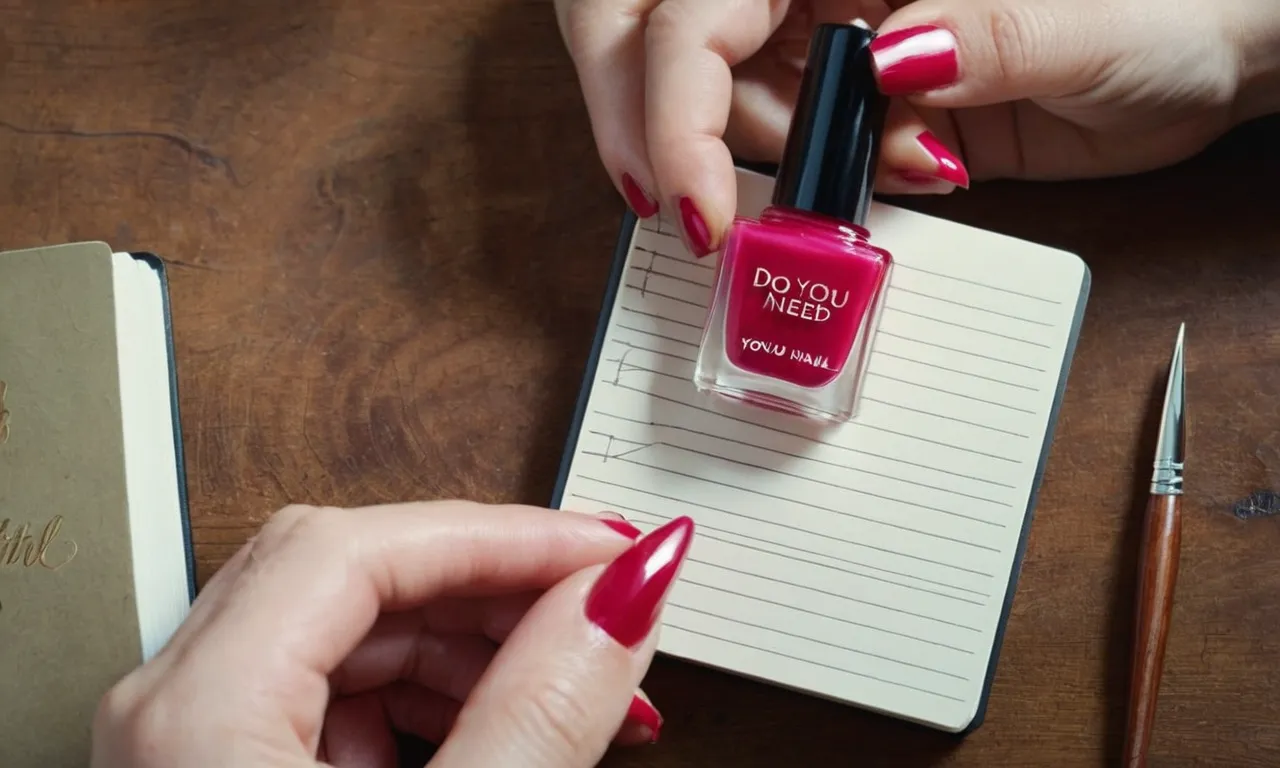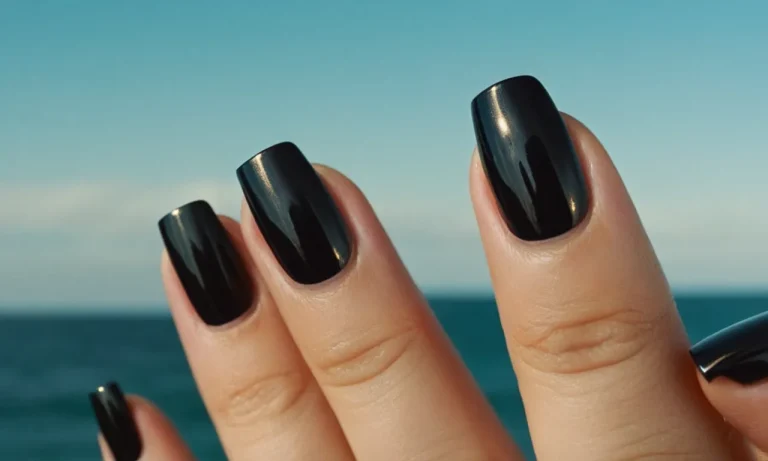Do You Need A Nail License To Do Nails?
If you enjoy doing nail art and want to turn your passion into a career, you may be wondering if you need a license to do nails professionally. With the growing popularity of nail salons and the seemingly simple skills required, the licensing requirements around manicures and pedicures are often unclear.
The short answer is yes, in most states you do need an official license or certification to provide nail care services like manicures, pedicures, acrylic nails, nail art, and more. Exact regulations vary by location, but a nail technician license ensures you have the proper training and expertise to safely and effectively service clients.
In this comprehensive guide, we’ll cover everything you need to know about getting licensed as a nail tech, including:
Nail Tech License Requirements
Education and Training Requirements
To become a licensed nail technician, you’ll need to complete a state-approved nail technician training program. These programs are offered at community colleges, career schools, and nail salons. Typical programs last 3-9 months and cover topics like sanitation and disinfection, nail structure, nail diseases, manicures, pedicures, acrylics, gels, and business skills.
For example, an awesome program at ABC Community College takes 6 months to complete and includes 100 hours of theory instruction and 125 hours of practical training. Students learn in a hands-on environment and gain experience providing services on real clients.
The course covers everything from nail anatomy and disorders to using electric nail files and performing spa manicures and pedicures.
Exams and Certification
After completing your nail technician program, you’ll need to take and pass a state board exam to get your license. Exams consist of a written theory section and a practical section where you’ll demonstrate your skills on a model.
The written section covers nail structure, diseases, sanitation, laws, and regulations. The practical section tests your ability with services like manicures, pedicures, acrylics, gels, and more. To pass, you’ll need a score of at least 70-75% on both sections.
States use exams from testing providers like Pearson VUE and Prometric. You’ll register and pay a fee to take the exam through the provider’s website. The fee is commonly around $100.
License Renewal and Continuing Education
Nail technician licenses need to be renewed every 1-2 years. To renew your license, you’ll have to pay a renewal fee and prove you’ve completed continuing education credits.
Required continuing ed hours range from 4 hours per year in some states to 16 hours in others. Some states require only a set number of hours per renewal period, not annually. Courses cover topics like infection control, new products and techniques, business practices, and state laws and regulations.
You can complete continuing ed at nail conferences, online courses, manufacturer trainings, or salon events. Renewal fees are typically $25-$100 every 1-2 years. Failing to renew your license on time can result in penalties or having to re-take the nail exam.
State-by-State Nail Tech Licensing Laws
States with Manicurist Licensing Requirements
As of January 2024, the majority of U.S. states have regulations in place for professional manicurists and nail technicians. According to the most recent data from various state boards and agencies, around 38 states require some form of occupational license or certification for manicurists to legally provide nail care services like manicures, pedicures, acrylic/gel nails, etc.
Some examples include:
- California – Must complete a state-approved manicurist training course with at least 350 hours of instruction and pass exams.
- New York – Must complete a nail specialty program with 250 training hours and pass licensing exams.
- Texas – Must graduate from a licensed nail technician school with 600 hours of training and pass state exams.
- Florida – Requires 240 hours of approved education with services and procedures training.
The requirements tend to include completing an accredited nail technician program, training hours ranging from 200 to 600 hours depending on the state, and passing written and practical exams for licensure.
These regulations help ensure nail techs acquire adequate knowledge and skills before working on clients. Continuing education is also mandated in most regulated states, compelling manicurists to stay up-to-date on sanitation, techniques and best practices.
Unregulated States with Voluntary Licensing
A minority of around 12 U.S. states currently do not regulate manicurists or nail salons at the state level. Examples include:
- Kansas – No regulations for manicurists.
- Arizona – Nail care professionals are unregulated by the state.
- South Carolina – Does not license nail techs.
- Alaska – No mandatory licensing for manicurists.
In these states, there are no requirements for education hours, testing or licensing to perform nail care services professionally. However, some unregulated states allow manicurists to obtain voluntary certifications or licenses by completing a training program, which can help demonstrate competency to prospective employers and clients.
For instance, Arizona offers a voluntary “Nail Technician Registration” after completing a 120-hour course and exam.
There are also a few states like Rhode Island that take a partial regulatory approach, requiring licenses only for specific services like acrylic/gel nail extensions but not general manicures. Overall, the licensing climate across America leans toward more regulation to uphold educational standards and public protection, but pockets of places still allow anyone to legally perform nail care with no credentials.
Apprenticeship Programs and On-the-Job Training
Getting formal training through an apprenticeship program or on-the-job training can be a great way to learn the ins and outs of nail technology while gaining practical experience. Here’s an overview of these hands-on training options:
Apprenticeship Programs
Many states offer formal apprenticeship programs for aspiring nail techs. These programs combine classroom instruction with extensive supervised practical training in a salon setting. Apprenticeships typically last 6-12 months and upon completion, apprentices will have met the requirements for taking the state board exam and becoming licensed.
Some of the benefits of apprenticeship programs include:
- Hands-on learning under the guidance of experienced nail techs
- Opportunity to practice skills on real clients in a salon environment
- Structured curriculum covering topics like sanitation, nail anatomy, and product chemistry
- May be offered at cosmetology schools or nail salons
The main downside is that apprenticeships can be challenging to find and you may need to reach out to salons directly to inquire about opportunities.
On-the-Job Training
Another option is to receive informal on-the-job training while working at a nail salon. Some salons are willing to hire assistants or trainees without much experience and train them through hands-on observation and practice.
Benefits of on-the-job training include:
- Getting paid while you learn practical skills
- Potential for quick advancement as skills improve
- Exposure to “real world” workplace environment
Drawbacks are that the quality of training can vary greatly between salons. The learning process may also be unstructured without a set curriculum.
Nail Salon Licensing Requirements
Salon Permits and Inspections
Operating a professional nail salon requires proper licensing and permits, which varies by state and municipality. Most areas require a general business license to operate any commercial business. Cosmetology facility licenses are also generally needed to provide nail technician services.
The requirements typically include:
- General business license and tax permits
- Cosmetology or nail salon establishment license
- Compliance with state board health and sanitation standards
- Passing inspections related to cleanliness, proper disinfection, ventilation, and building codes
Periodic inspections from health departments or occupational boards ensure that standards are maintained. For example, appropriate access to handwashing facilities and proper sterilization of reusable manicure/pedicure equipment may be checked.
Insurance Needs
Nail salons should carry certain insurance policies to protect their business assets and mitigate risks associated with operations:
- General liability insurance – Covers third party bodily injury and property damage claims. Provides defense costs and settlements up to policy limits for covered incidents like slip and fall accidents.
- Professional liability insurance – Protects against malpractice, errors, negligence during professional services that cause financial injury to a client.
- Workers compensation – Pays for employee medical and lost wage benefits if injured on the job.
- Business personal property coverage – Replaces damaged or stolen property and equipment owned by the salon such as pedicure chairs.
| According to research from Value Penguin: | On average, annual insurance costs for a nail salon in the U.S fall between $1,200-$1,800. |
Protecting customers and business assets through adequate insurance is a fundamental part of operating a licensed, professional nail care business.
Mobile Nail Tech Licensing
The nail salon industry has grown rapidly in recent years, with more and more nail technicians working as mobile professionals. This increase in mobile nail services has led to questions around licensing requirements for mobile nail techs in different states and cities.
Here’s an overview of what you need to know about getting licensed as a mobile manicurist or pedicurist:
State License Requirements
In most states, you need an active nail technician license in order to provide mobile nail care legally. This requires completing an approved nail technician training program and passing both a written and practical exam for your state. The license must be renewed periodically, often every 2 years.
Some states have reciprocity agreements, allowing you to transfer an out-of-state nail tech license.
A few exceptions to state licensing for mobile techs:
- Alabama does not require a license for manicurists.
- Connecticut exempts mobile techs from getting a license if they have been licensed out-of-state for at least 3 years.
- Idaho, Kansas, Massachusetts, Minnesota, and New York do not require nail techs to be licensed if they only provide mobile services.
However, many municipalities in these unregulated states still require local licensing to operate legally as a mobile nail tech.
Local Permitting for Mobile Nail Salons
Even if you are licensed by your state as a nail technician, many cities and counties require mobile nail salon businesses to get a special permit or business license to operate in their jurisdiction.
For example, Los Angeles, San Diego, San Francisco, and other California cities require all nail salons, including mobile businesses, to be permitted locally.
Some of the common local permits needed may include:
- Mobile nail salon permit
- Mobile business license
- Pedicab operator’s permit (if you use a pedicab)
- Health/sanitation permit
The requirements vary widely across different cities and counties, so it’s important to research the local rules in the specific areas you want to work.
Maintaining Your Mobile Nail License
Here are some tips for keeping your mobile nail license active and valid:
- Renew your state nail technician license before it expires.
- Take continuing education classes as required by your state board.
- Pay any renewal fees on time.
- Notify the state licensing board after moving to a new address.
- Follow all sanitation and disinfection protocols mandated by your state.
Falling out of compliance with state licensing rules could lead to fines or your license being revoked. Stay up-to-date on law changes, new regulations, and other notifications from your state’s cosmetology board.
With the proper licenses and permits, mobile nail techs can build thriving businesses. But it’s crucial to do your homework first and understand all applicable state and local requirements.
Conclusion
While a nail technician license may seem restricting, the qualifications ensure every manicurist and pedicurist has adequate training in sanitation, disinfection, client safety techniques. This helps cultivate professionalism in the industry and prevent the spread of infections.
Each state has unique requirements to legally provide nail services, so be sure to research the specific laws where you plan to work. In most cases, a combination of education, exams, apprenticeship, and continuing education are needed to renew a nail tech license annually or biennially.







